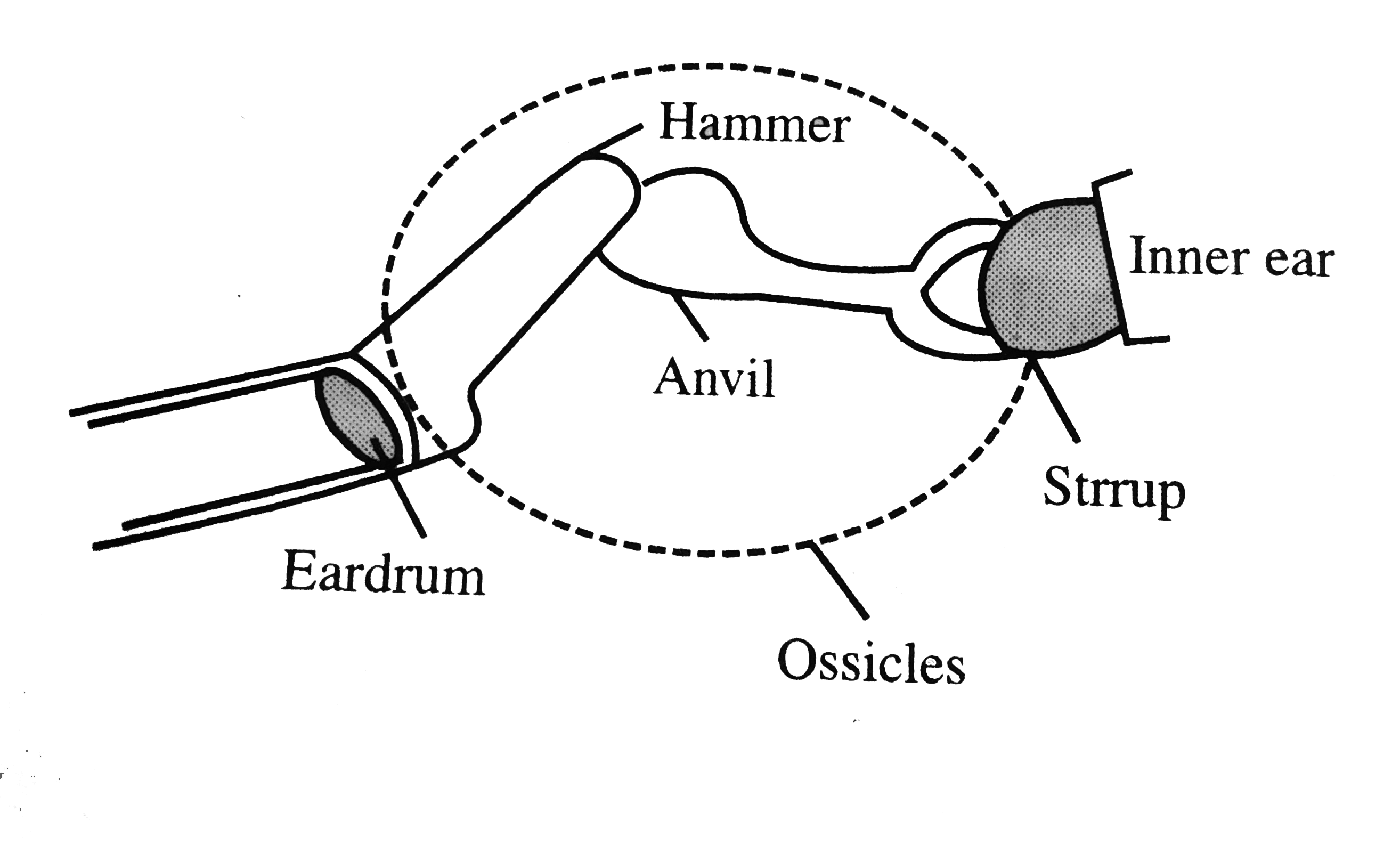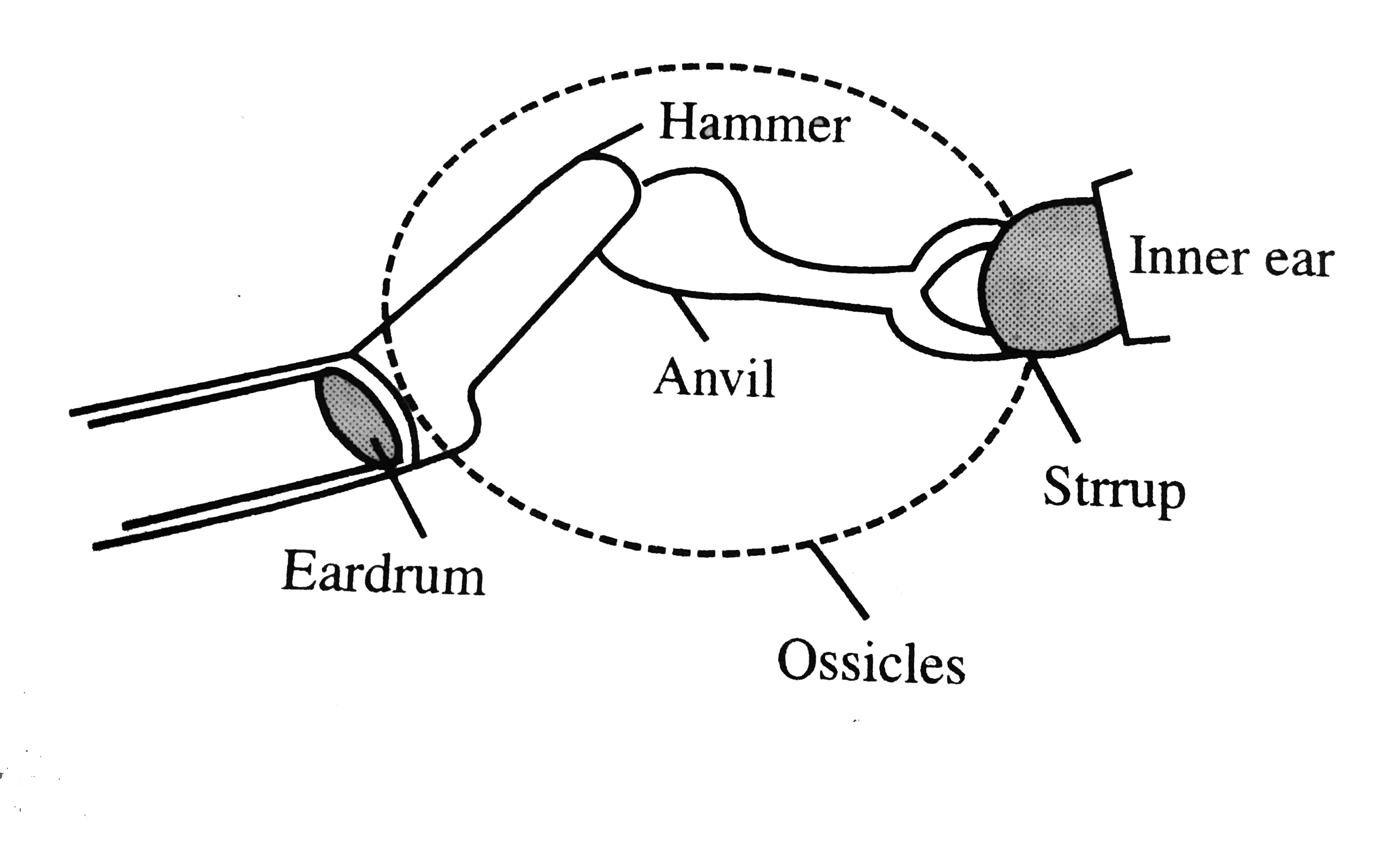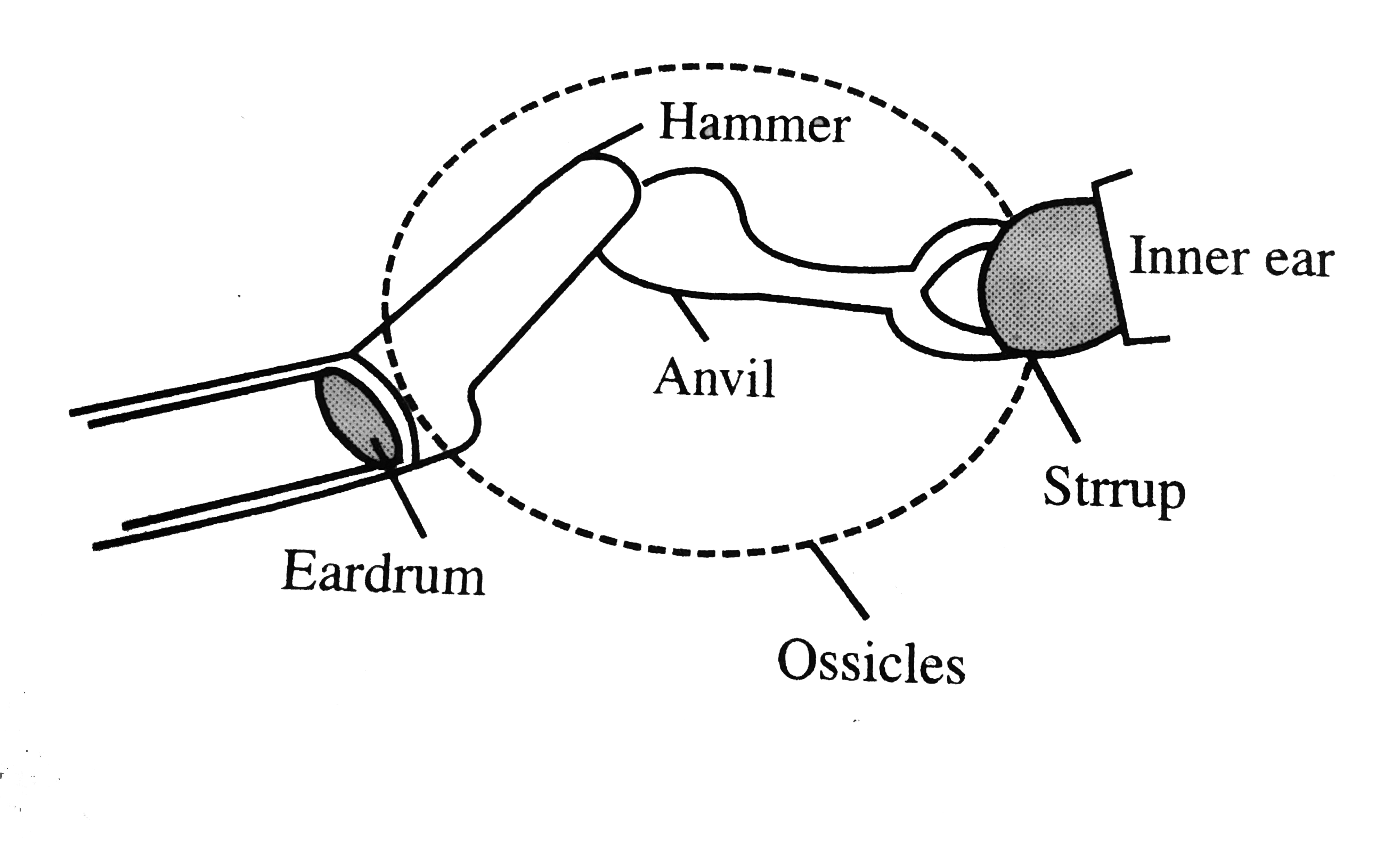Assertion The immediate ancestor of present day human was Australopithecus.
Reason Australopithecus was discovered from Australia and its cranial capacity was 1150−1300cm2,
Which is very close to that of human 1400−1450cm3.
Both Assertion and Reason are true and Reason is the correct explanation of Assertion
Both Assertion and Reason are true, but Reason is not the correct explanation of Assertion
Assertion is true, but Reason is false
Assertion is false, but Reason is also false
The correct Answer is:C
The immediate ancestor of present day humans is Honio sapiens fossilis, i.e. Cro-magnon man. They lived about 340000 years ago. Australopithecus was first discovered in Tuang Africa. Its cranial capacity is 500-700 cc, which is equivalent to modern gorilla.
Topper's Solved these Questions
- EVOLUTION OF HUMANBook:ARIHANT NEETChapter:EVOLUTION OF HUMANExercise:CHAPTER EXERCISES (COLLECTION OF QUESTIONS ASKED IN NEET &VARIOUS MADICAL ENTRANCE EXAMS)
Explore 23 Videos
- EVOLUTION OF HUMANBook:ARIHANT NEETChapter:EVOLUTION OF HUMANExercise:CHAPTER EXERCISES (MEDICAL ENTRANCESS SPECIAL FORMAT QUESTIONS)(STATEMENT BASED QUESTIONS)
Explore 10 Videos
- EVIDENCES OF EVOLUTIONBook:ARIHANT NEETChapter:EVIDENCES OF EVOLUTIONExercise:Chapter exercises (Medical entrances gallery)(Collection of questions Asked in NEET & Various Medical Entrance Exams )
Explore 58 Videos
- EXCRETORY PRODUCTS AND THEIR ELIMINATIONBook:ARIHANT NEETChapter:EXCRETORY PRODUCTS AND THEIR ELIMINATIONExercise:Section(C )-Medical entrances gallery
Explore 69 Videos
Similar Questions
A student focuses the image of a candle flame, placed at about 2 m from a convex lens of focal length 10 cm, on a screen. After that, he moves gradually the flame towards the lens and each time its image on the screen.
(a) In which direction does he move the lens to focus the flame on the screen?
(b) What happens to the size of the image of the flame formed on the screen ?
(c ) What difference is seen in the intensity (brightnees) of the image of the flame on the screen ?
(d) What is seen on the when the flame is very close (at about 5 cm) to the lens ?
View Solution
When a sound wave enters the ear, it sets the eardrum into oscillation, which in turn causes oscillation of 3 tiny bones in the middle ear called ossicles. This oscillation is finally transmitted to the fluid filled in inner portion of the ear termed as inner ear, the motion of the fluid disturbs hair cells within the inner ear which transmit nerve impulses to the brain with the information that a sound is present. The theree bones present in the middle ear are named as hammer, anvil and stirrup. Out of these the stirrup is the smallest one and this only connects the middle ear to inner ear as shown in the figure below. The area of stirrup and its extent of connection with the inner ear limits the sensitivity of the human ear consider a person's ear whose moving part of the eardrum has an area of about 50mm2 and the area of stirrup is about 5mm2. The mass of ossicles is negligible. As a result, force exerted by sound wave in air on eardum and ossicles is same as the force exerted by ossicles on the inner ear. Consider a sound wave having maximum pressure fluctuation of 4×10−2Pa from its normal equilibrium pressure value which is equal to 105Pa. Frequency of sound wave in air is 332ms. Velocity of sound wave in fluid (present in inner ear) is 1500ms. Bulk modulus of air is 1.42×105Pa. Bulk modulus of fluid is 2.18×109Pa.
Q. If the person is using an hearing aid, which increase the intensity of given sound wave change as perceived by inner ear?
View Solution
Knowledge Check
Assertion.Oue present day crop plants are entirely different from their ancestors.
Reason. Almost all our present day crops are result of selections carried out by the prehistoric human beings.AIf both Assertion and Reason are true and the Reason is a correct explanation of the Assertion.BIf both Assertion and Reason are true but Reason is not a correct explanation of the Assertion.CIf Assertion is true but the Reason is false.DIf both Assertion and Reason are false.Assertion: GM food which is prepared from GM crops may be more nutritous and good for health than its natural variant
Reason :Bacteria present in the alimentary canal of human could take up the antibiotic resistance gene than is present in GM food. The bacteria would then become resistant to concerned antibioticAIf both Assertion & Reason are True & the Reason is a correct explanation of the AssertionBIt both Assertion & Reason are True but Reason is not a correct explanation of the AssetionCIf Assertion is True but the Reason is FalseDIf both Assertion & Reason are false
When a sound wave enters the ear, it sets the eardrum into oscillation, which in turn causes oscillation of 3 tiny bones in the middle ear called ossicles. This oscillation is finally transmitted to the fluid filled in inner portion of the ear termed as inner ear, the motion of the fluid disturbs hair cells within the inner ear which transmit nerve impulses to the brain with the information that a sound is present. The theree bones present in the middle ear are named as hammer, anvil and stirrup. Out of these the stirrup is the smallest one and this only connects the middle ear to inner ear as shown in the figure below. The area of stirrup and its extent of connection with the inner ear limits the sensitivity of the human ear consider a person's ear whose moving part of the eardrum has an area of about 50mm2 and the area of stirrup is about 5mm2. The mass of ossicles is negligible. As a result, force exerted by sound wave in air on eardum and ossicles is same as the force exerted by ossicles on the inner ear. Consider a sound wave having maximum pressure fluctuation of 4×10−2Pa from its normal equilibrium pressure value which is equal to 105Pa. Frequency of sound wave in air is 332ms. Velocity of sound wave in fluid (present in inner ear) is 1500ms. Bulk modulus of air is 1.42×105Pa. Bulk modulus of fluid is 2.18×109Pa.
Q. This person (without hearing aid machine) is sitting inside a busy restaurant where average sound intensity is 3.2×10−5Wm2. How much energy in the form of sound is taken up by the person in his meal time of 1 h?A1.2×10−5JB1.8×10−4JC2.4×10−5JD3.6×10−4J

When a sound wave enters the ear, it sets the eardrum into oscillation, which in turn causes oscillation of 3 tiny bones in the middle ear called ossicles. This oscillation is finally transmitted to the fluid filled in inner portion of the ear termed as inner ear, the motion of the fluid disturbs hair cells within the inner ear which transmit nerve impulses to the brain with the information that a sound is present. The theree bones present in the middle ear are named as hammer, anvil and stirrup. Out of these the stirrup is the smallest one and this only connects the middle ear to inner ear as shown in the figure below. The area of stirrup and its extent of connection with the inner ear limits the sensitivity of the human ear consider a person's ear whose moving part of the eardrum has an area of about 50mm2 and the area of stirrup is about 5mm2. The mass of ossicles is negligible. As a result, force exerted by sound wave in air on eardum and ossicles is same as the force exerted by ossicles on the inner ear. Consider a sound wave having maximum pressure fluctuation of 4×10−2Pa from its normal equilibrium pressure value which is equal to 105Pa. Frequency of sound wave in air is 332ms. Velocity of sound wave in fluid (present in inner ear) is 1500ms. Bulk modulus of air is 1.42×105Pa. Bulk modulus of fluid is 2.18×109Pa.
Q. With respect to information provided above, mark the correct statement.
View Solution
When a sound wave enters the ear, it sets the eardrum into oscillation, which in turn causes oscillation of 3 tiny bones in the middle ear called ossicles. This oscillation is finally transmitted to the fluid filled in inner portion of the ear termed as inner ear, the motion of the fluid disturbs hair cells within the inner ear which transmit nerve impulses to the brain with the information that a sound is present. The theree bones present in the middle ear are named as hammer, anvil and stirrup. Out of these the stirrup is the smallest one and this only connects the middle ear to inner ear as shown in the figure below. The area of stirrup and its extent of connection with the inner ear limits the sensitivity of the human ear consider a person's ear whose moving part of the eardrum has an area of about 50mm2 and the area of stirrup is about 5mm2. The mass of ossicles is negligible. As a result, force exerted by sound wave in air on eardum and ossicles is same as the force exerted by ossicles on the inner ear. Consider a sound wave having maximum pressure fluctuation of 4×10−2Pa from its normal equilibrium pressure value which is equal to 105Pa. Frequency of sound wave in air is 332ms. Velocity of sound wave in fluid (present in inner ear) is 1500ms. Bulk modulus of air is 1.42×105Pa. Bulk modulus of fluid is 2.18×109Pa.
Q. Find the pressure amplitude of given sound wave in the fluid of inner ear.
View Solution
When a sound wave enters the ear, it sets the eardrum into oscillation, which in turn causes oscillation of 3 tiny bones in the middle ear called ossicles. This oscillation is finally transmitted to the fluid filled in inner portion of the ear termed as inner ear, the motion of the fluid disturbs hair cells within the inner ear which transmit nerve impulses to the brain with the information that a sound is present. The three bones present in the middle ear are named as hammer, anvil and stirrup. Out of these the stirrup is the smallest one and this only connects the middle ear to inner ear as shown in the figure below. The area of stirrup and its extent of connection with the inner ear limits the sensitivity of the human ear consider a person's ear whose moving part of the eardrum has an area of about 50mm2 and the area of stirrup is about 5mm2. The mass of ossicles is negligible. As a result, force exerted by sound wave in air on eardrum and ossicles is same as the force exerted by ossicles on the inner ear. Consider a sound wave having maximum pressure fluctuation of 4×10−2Pa from its normal equilibrium pressure value which is equal to 105Pa. Frequency of sound wave in air is 332ms. Velocity of sound wave in fluid (present in inner ear) is 1500ms. Bulk modulus of air is 1.42×105Pa. Bulk modulus of fluid is 2.18×109Pa.
Q. Find the displacement amplitude of given sound wave in the fluid of inner ear.
View SolutionRead the passage given below and answere the questions that follow by selecting the most appropriate option.
Science, in so far as it consists of knowledge, must be regarded as having value but in so far as it consists of technique, the question whether it is to be praised or blamed depends upon the use that is made of the technique. In itself it is neutral, neither good nor bad. Any ultimate view that we amy have about what gives value to this or that must come from other sources than science.
Both good and evil, almost everything that distinguishes our age from its predecessors, is due to science. In daily life we have electricity, the radio and cinema. Because of the increased productivity of labour, we are able to devote a far greater proportion of our energies to wars and preparation for wars than was formerly possible and we are able to keep the young in school very much longer than we formerly could.
Owing to science we are able to disseminate information through the press and the radio to practically everybody. Owing to science, we can make it more enormously difficult than it used to be for people whom the government dislikes, to escape. The opposition to Science in past by some was surprising. Men of science affirmed things that were contrary to what everybody had believed, they upset preconceived ideas and were thought to be destitute for reverence.
It would not be surprising if in the present day, A powerful antiscientific movement were to arise as a result of the dangers to human life that are resulting from atom bombs and may result from bacteriological warfare. But whatever people may feel about these horrors, they dare not turn against the men of Science so long as war is at all probable, because if one side is equipped with scientists and the other not, scientific side would almost certainly win.
Which of the following has not been mentioned by the author as one of the uses to which science has been put either for good or for bad?
View SolutionScience, in so far as it consists of knowledge, must be regarded as having value but in so far as it consists of technique, the question whether it is to be praised or blamed depends upon the use that is made of the technique. In itself it is neutral, neither gooi nor bad. Any utimate view that we may have about what gives value to this or that must come from other sources than science.
Both good and evil, almost everything that! distinguishes our age from its predecessors are due to science. In daily life we have electricity, the radio and cinema: Because of the increased productivity of labour, we are able to devote a far greater proportion of our energies to wars and preparation for wars than was formerly possible and we are able to keep the young in school very much longer than we formerly could. Owing to science we are able to disseminate information through the press and the radio to practically everybody. Owing toʻscience, we can make it more enormously difficult than it used to be for people whom the government dislikes, to escape. The opposition to science in past by some was surprising, Men of science affirmed things that were contrary to what everybody had believed, they upset pre-conceived ideas and were thought to be destitute for reverence.
It would not be surprising if in the present day, a powerful antiscientific movement were to arise as a result of the dangers to human life that are resulting from atom bombs and may result from bacteriological warfare. But whatever people may feel about these horrors, they dare not turn against the men of science so long as war is at all probable, because if one side is equipped with:scientists and the other not, scientific side would almost.certainly win.
Which conception of science has the author mentioned in the passage?
View Solution